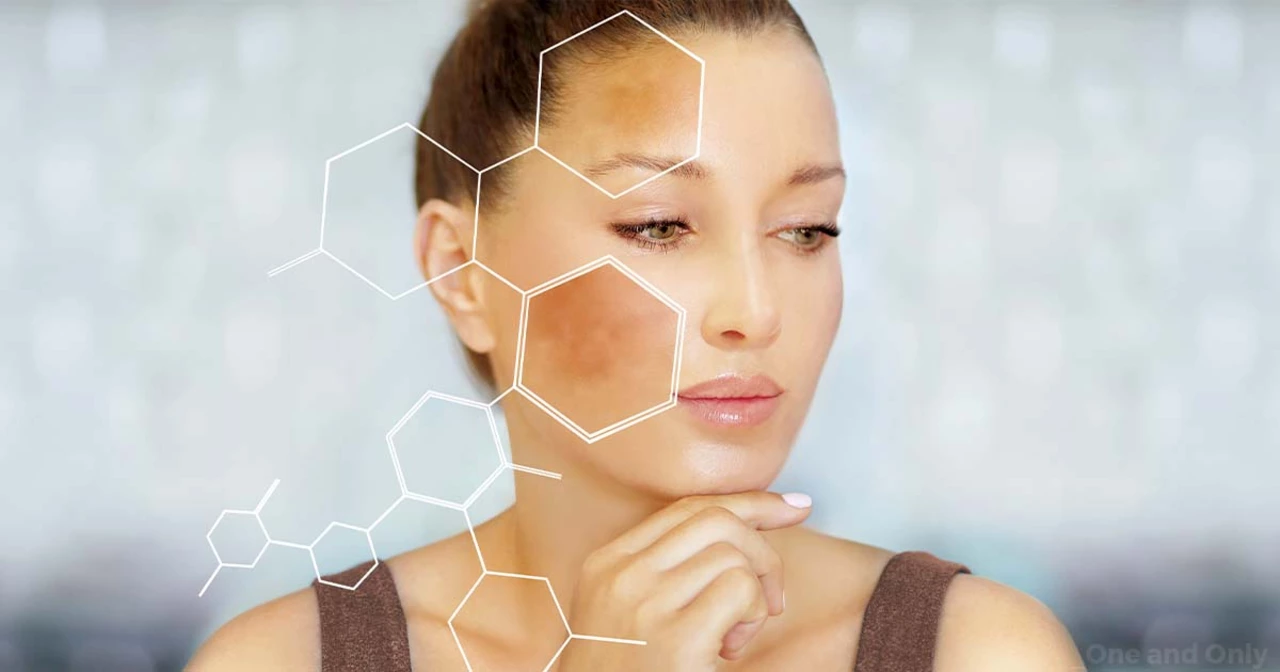SEARCH
What Is Chloasma and Why Does It Show Up?
If you’ve noticed dark brown patches on your face—especially across the forehead, cheeks or nose—you’re probably looking at chloasma. Doctors also call it melasma, but the key thing is that it’s a type of hyperpigmentation caused by excess melanin in the skin.
Hormones are the biggest trigger. That’s why pregnant women and people on birth‑control pills often see these spots appear. Sun exposure makes them darker because UV light tells your skin to produce even more pigment. Genetics play a role, too; if your parents had it, you’re at higher risk.
How to Spot Chloasma Early
Chloasma usually shows up as symmetrical patches—meaning they appear on both sides of the face in similar shapes. The color can range from light beige to deep brown, and the spots are flat, not raised. They tend to become more noticeable after a sunny vacation or when you start a new hormone regimen.
Because it mimics other skin conditions, a quick visit to a dermatologist helps confirm it’s chloasma and not something like post‑inflammatory hyperpigmentation. A dermatologist might use a Wood's lamp—an ultraviolet light—to see how deep the pigment sits in your skin.
Practical Ways to Lighten or Hide the Patches
The good news is you have options that work without surgery. First, sunscreen is non‑negotiable. Choose a broad‑spectrum SPF 30 or higher and reapply every two hours when outdoors. Even on cloudy days, UV rays can aggravate chloasma.
Topical treatments are the next step. Products with ingredients like hydroquinone, azelaic acid, kojic acid, vitamin C or niacinamide can gradually fade the spots. Start with a low concentration to avoid irritation and use them at night for best results.
If you want faster outcomes, prescription‑strength creams or chemical peels (glycolic or salicylic acid) may be recommended by your dermatologist. These procedures remove the top layer of pigmented skin, letting fresh, lighter skin grow back.
For those who prefer natural routes, consistent use of a sunscreen‑infused moisturizer with zinc oxide plus an antioxidant serum can help. Some people see modest improvement with over‑the‑counter brightening masks that contain licorice extract or mulberry root.
Makeup is a handy camouflage tool while you treat the condition. A color‑correcting primer in a peach or orange shade neutralizes brown tones, and a full‑coverage foundation can even out your complexion. Set with translucent powder to keep everything in place.
Finally, lifestyle tweaks matter. Limit direct sun exposure during peak hours (10 am–4 pm), wear wide‑brimmed hats, and choose clothing that covers your shoulders when you’re outside for long periods.
Chloasma can be frustrating, but with consistent sunscreen use, targeted topical agents, and occasional professional treatments, most people see a noticeable lightening within a few months. Keep an eye on how your skin responds, stay patient, and don’t hesitate to ask a dermatologist for personalized advice.

Chloasma and Ethnicity: How Skin Pigmentation Varies Across Cultures
In my latest blog post, I explored the fascinating topic of Chloasma and how it relates to ethnicity and skin pigmentation across different cultures. Chloasma, also known as melasma, is a skin condition characterized by dark, irregular patches on the face. I discovered that this condition is more prevalent in individuals with darker skin tones, particularly those from Hispanic, African, and Asian backgrounds. The reason behind this is the increased melanin production in these ethnicities, making them more susceptible to skin pigmentation changes. This post serves as a reminder of the importance of understanding and embracing the diversity in our world, especially when it comes to our skin and its unique characteristics.
Continue reading